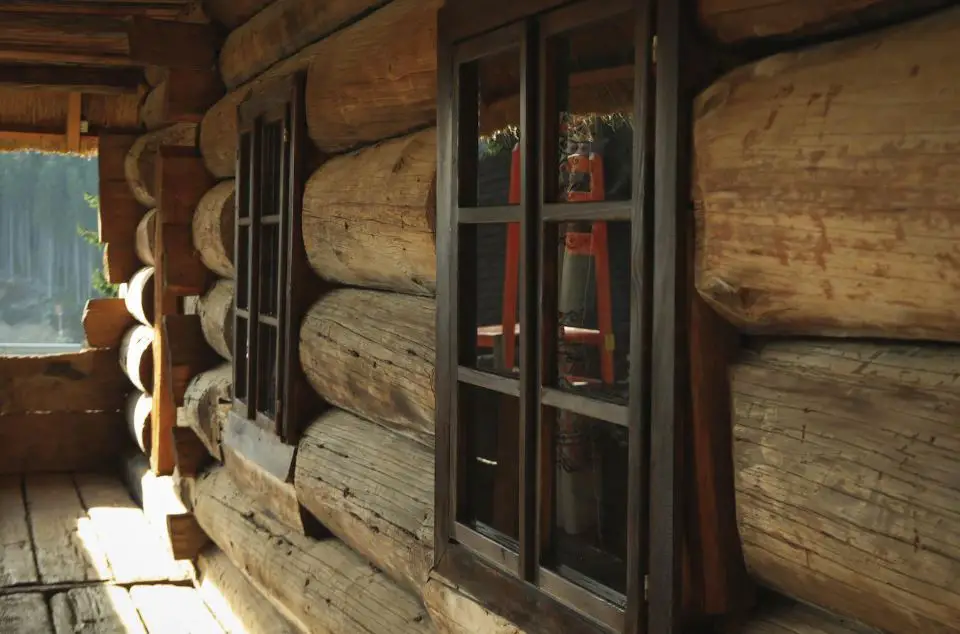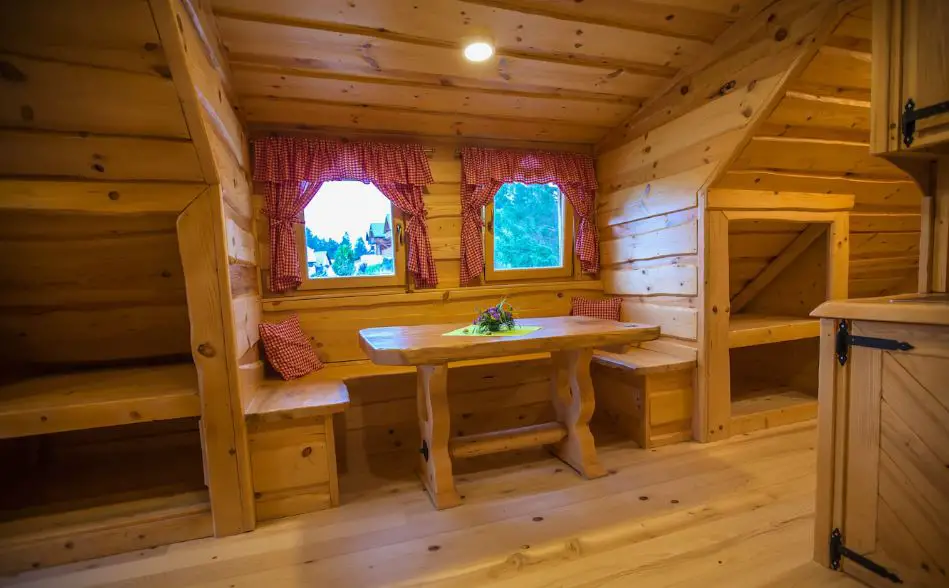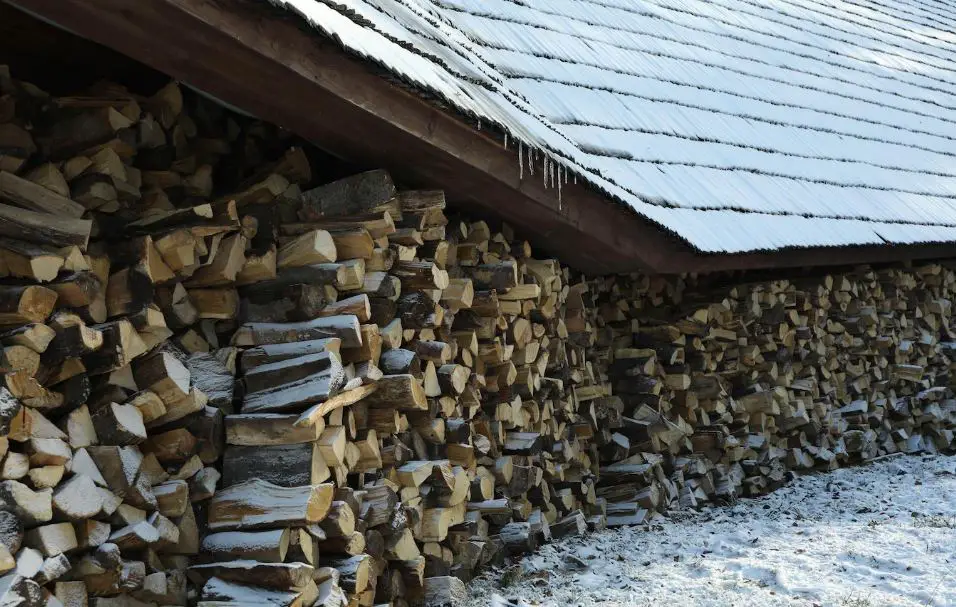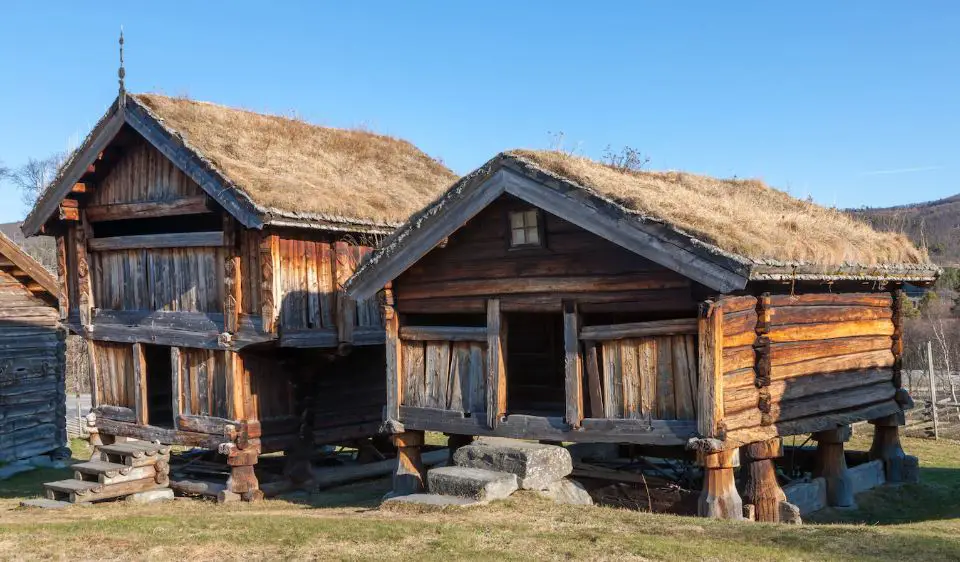Disadvantages Of Log Homes & Common Problems You Need To Consider

Log cabins have a certain rustic, old world charm.
They conjure up images of majestic winter mountain landscapes and roaring fires. These days, log cabins are actually seen as something of a luxury but that wasn’t always the case.
In colonial America, log cabins were the main type of homes that settlers could build for themselves. In 2022 however, the utility of log cabins has changed completely. These days, log cabins are essential vacation houses.
You may have even stayed in a log home on vacation as your AirBNB. However, something interesting is starting to happen with log homes.
As housing prices continue to soar, more and more people are looking at log cabins much as our colonial forebears did: as a means of permanent housing.
Even people who haven’t been affected by the rising costs of housing are considering log homes simply for their rustic charm and nostalgia. But before you pull the trigger on a log home, there are certain things you should know about them.
In the following article, we are going to be taking a look at the main disadvantages of log homes. We will also talk about the things you should consider if you are interested in building or buying a log cabin.
Overview of the Disadvantages of Log Homes
“Log homes present various challenges for owners. For instance, they are often prone to insect infestation. They are also more susceptible to fires. It may even cost a lot more to insure a log home than it would a normal home. Many people simply aren’t prepared for the level of maintenance that log homes require.”
The Disadvantages of Log Homes

Pests and Critters
– Since the main component of log cabins is wood, they are a magnet for termites and other insects and pests. Carpenter bees are also a major problem for log cabins. Carpenter bees don’t actually eat wood; but they burrow into it to make their nests which can certainly compromise structural integrity.
Limited Availability
– You aren’t going to find log cabins in every neighborhood in America. In fact, most log cabins are in rural areas like the mountains. This means that their availability is limited.
Insurance Costs
– Since most log cabins in America are located in rural areas, far away from fire departments and other emergency services, it tends to cost more to insure them. Log cabins are also expensive to rebuild so insurance companies usually charge more for log cabin policies.
Installation Issues
– Most contractors aren’t familiar with building log cabins which means that there is more opportunity for construction issues than with normal houses.
Windows and Doors Can Cause Issues
– Any break in the natural structure of log cabins can cause insulation issues. So windows and doors tend to be more problematic than in normal homes.
Longevity
– With proper maintenance, log cabins can last for hundreds of years. But most modern log cabins are built to last very long. And if they are not maintained properly, there is little hope that log cabins will last more than a generation or so.
Resale Value
– As nostalgic as they may be, there are still not a whole lot of people interested in buying log cabins in 2022. So if you invest in one, it may be difficult to sell.
Leakage Issues
– If log cabins aren’t meticulously caulked and sealed, they are very prone to leaks.
Expensive to Build
– If you plan to build a log cabin, expect to pay a lot. Materials and labor tend to be very expensive for log cabin construction.
As most log cabins are built in rural areas, transporting materials alone may cost an arm and a leg. Contractors with log cabin experience usually charge a premium for their services as well.
Contractor Limitations
– Again, there aren’t very many contractors in 2022 who specialize in log cabin construction so finding one could be a challenge in and of itself.
They Lose Value
– Because of how difficult it is to maintain log cabins, they may lose value quicker than a normal home.
Deterioration Issues
– Unless a log cabin is meticulously maintained, deterioration can start to occur after just a few years.
Other Considerations

The bane of any log cabin owner’s existence is termites.
Of course, these kinds of homes are made of wood so they are natural magnets for termites. And as wood is an organic material, log cabins are also susceptible to mildew and mold when it rains, snows, or if there is simply excess moisture in the air or ground.
Heating is also an issue. Log cabins insulate very well naturally meaning that they keep heat and cool air inside very effectively. The trick is getting them warm from the inside.
Many HVAC systems are not viable for these kinds of structures so wood-burning stoves are usually needed to heat log cabins. Of course that means you will have to keep a ready supply of firewood on hand.
The Upside of Log Homes
Easier Construction
– If you can find a contractor that is familiar with building these kinds of homes, the construction may actually be easier. That’s because inherently, log homes are simple structures. Some people actually learn how to build log cabins themselves.
Good Vacation Homes
– Of course, you don’t have to use a log cabin as your full-time house. As vacation homes or second homes, log cabins are solid alternatives.
Eco-Friendly
– Since trees are a renewable resource, log cabins can often be more eco-friendly than regular homes. Some builders use materials that come from sustainable forests as well.
They Age Well
– When log cabins are properly maintained, they age very well. With proper care, a log cabin can develop that rustic yet cozy look that attracts many people to them.
Are Log Homes Worth it?
Basically, the only way a log cabin will be worth it is if you are prepared to maintain it properly.
This means cleaning and treating the exterior every year and re-caulking about every three years. The wood also needs to be re-stained and sealed every 3-4 years.
This is the only way that a log cabin will retain its value, have any kind of longevity and be functional for anyone to actually live in.
Who Should Buy A Log Cabin?

If you are interested in investing in a rental or vacation property, you may do well with a log cabin.
Log cabins are always attractive for mountain getaways, vacations, corporate retreats, winter sports enthusiasts and more.
Log cabins may also be good for anyone looking to build a second home or a vacation home for their family.
Again though, anyone who buys a log cabin should familiarize themselves with how to properly maintain one.
What To Do Before Buying A Log Home?
The most important thing you should do before buying a log home is have it professionally inspected. However, there are some things you can do to get the ball rolling:
- Schedule a Visit – Getting eyes on the log home should be one of the first things you should do.
- Ask the Owner About Stain – Ask the owner what kind of stain was used on the wood and how often it has been stained over the years.
- Look for Insect Damage – Look for carpenter bee damage which usually takes the form of uniform holes in the wood with small piles of sawdust underneath.
Do I Need Planning Permission?
Surprisingly, log cabins are classified as permitted developments which means that in most cases, you will not need any special permits to build one. However, log cabins that are exceptionally large or tall will need permits.
Log Home FAQs
How many years do log cabins last for?
This is a very common question as there are famous log cabins in America that have been standing for hundreds of years.
Keep in mind though that many of these cabins have been deemed historical sites and are professionally maintained.
In reality, a modern log cabin that has been built professionally and maintained well is likely to last about 50 years.
Are log homes a lot of maintenance?
Absolutely. Since they are made of logs, the wood has to be re-stained and re-sealed every three years or so.
Log cabins also have to be inspected for mold and mildew on a regular basis as well. If mold or mildew is found in the wood, it has to be removed.
The exterior of the log cabin would be cleaned every year as well to get rid of insect debris, pollen and other contaminants that could harm the wood. And since there are many areas of a log cabin that are susceptible to leaks, they have to be re-caulked on a regular basis as well.
How often do log homes need to be treated?
Some log homes may need to be treated with insect repellant every year. The wood may also have to be treated every 3 years.
Are log houses well insulated?
Yes. This is one of their main advantages. Log homes that have been properly constructed and maintained can be up to 20% more energy efficient than stick frame homes. They tend to keep indoor air in very well.
What do I need to know about living in a log cabin?
Log cabins don’t usually have a ton of storage so you may not be able to move all your things into one.
You should also know that most log cabins are in rural areas so you may be further away from stores and even hospitals.
You are also more likely to encounter wildlife when living in a log cabin. This means that they may intrude on your property or startle you when you don’t expect them.
What kind of maintenance do log homes need?
Once a year you have to wash the exterior of log cabins. At this time, the cabin should also be inspected for mold and mildew. You may have to remove faulty caulking and replace it. Every 3 years or so, you will also have to restain and reseal the exterior.
Why are log homes more expensive to insure?
Log homes tend to be further away from emergency services like fire departments. They are also more expensive to rebuild than normal homes.
Are log homes a good investment?
Log homes can be a good investment if you know how to properly maintain them. They are also attractive options for mountain getaways and vacations so they may be good rental/vacation home investments.
Does Progressive insure log cabins?
In most cases, Progressive will only insure your log cabin if it was professionally constructed. They may need to get in touch with the contractors that built it.
Will USAA insure a log home?
USAA is one of the insurance companies that regularly insures log homes. Some of the others include Met Life, State Farm and Farmers.
What type of insurance covers off-grid homes?
It will depend on the insurance carrier you go with. In general though, this type of coverage is simply called “off-grid home insurance.
Final Thoughts

Log cabins are alluring to people all over the world.
They are not without their share of advantages to be sure; but you have to consider all the facts before you take the plunge. The main consideration here is maintenance.
Log cabins need a lot more maintenance than stick frame homes. You may also find yourself further away from schools, grocery stores, restaurants, police departments and even hospitals if you buy and live in a log cabin.
Everything is relative though and many people actually relish the opportunity to live in a spread out area where neighbors aren’t breathing down their necks. So are log cabins the answer to the housing crisis? Probably not.
Are they a good alternative to stick frame housing? Only for people who are prepared to maintain them and adapt to cabin living.
While they are certainly alluring, you have to carefully consider all the pros and cons of log homes.


